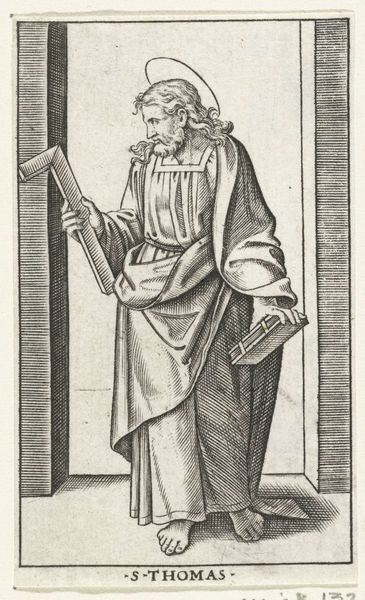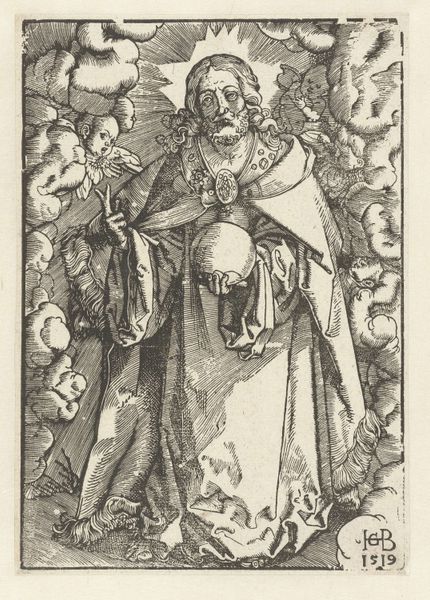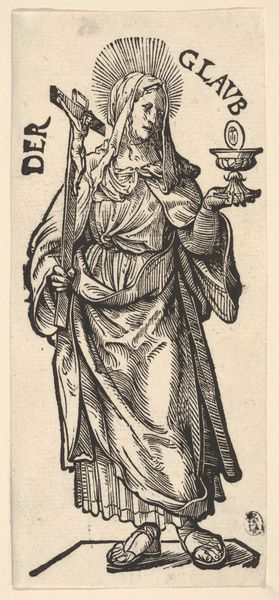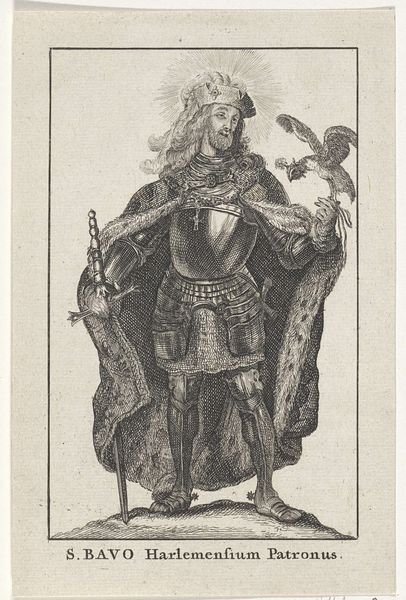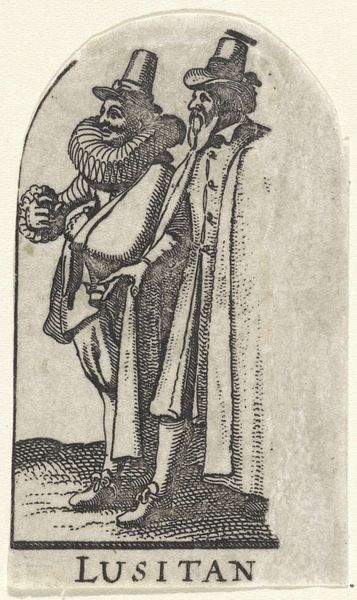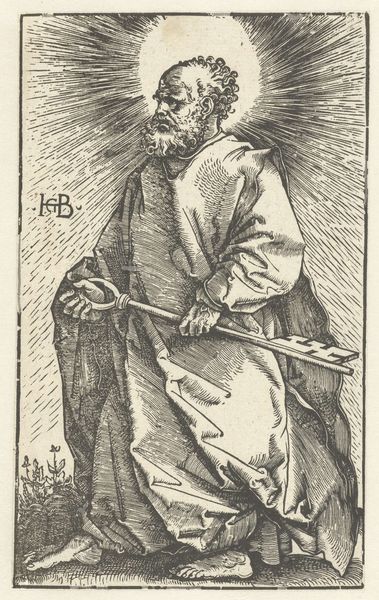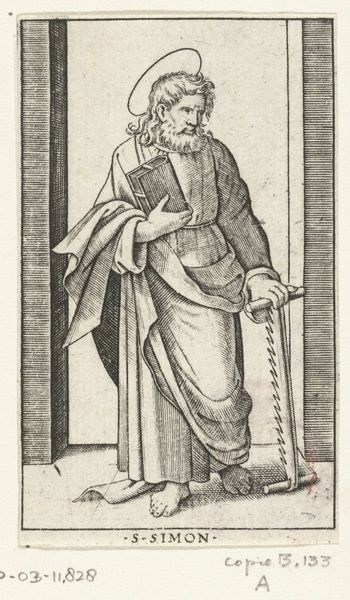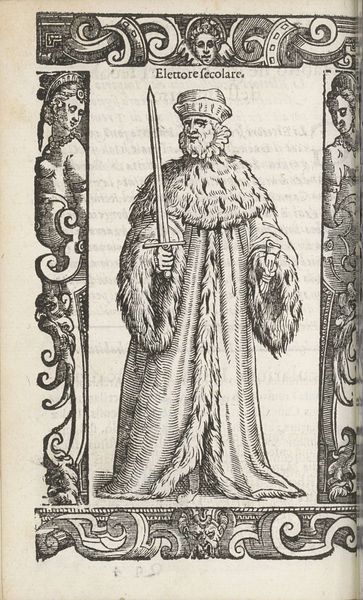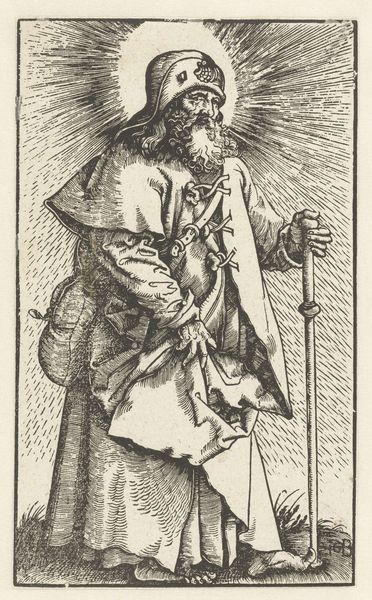
print, engraving
#
portrait
# print
#
pen illustration
#
history-painting
#
northern-renaissance
#
engraving
Dimensions: height 259 mm, width 168 mm
Copyright: Rijks Museum: Open Domain
Curator: Ah, here we have "Heilige Koloman" which translates to Saint Koloman, a print made between 1513 and 1781 after an original work by Albrecht Dürer. It’s currently housed at the Rijksmuseum. Editor: Well, the first thing that strikes me is this stillness. Despite the intricate detail and decorative elements surrounding the central figure, the saint possesses a serene, almost mournful stillness. The overall design and monochromatic palette enhance that quiet intensity. Curator: It’s executed by Hans Springinklee, following Dürer's earlier work; a beautiful example of the Northern Renaissance style, meticulously rendered in engraving. Notice the symbolic items he carries: a staff in his left hand and in the other a knotted rope. What can we say about those? Editor: The rope I find particularly compelling because in religious artwork ropes were common items. The rope itself symbolizes devotion but more frequently in relationship to enslavement, a vow of celibacy, or even death! Also note, he seems to wear a crown. So is he enslaved or is it simply meant to convey he is bound by vows? His garments say wealth, and he is surrounded by shields, another signifier. Curator: True! These can be tricky things to fully decode and can change with context of location and era. I interpret the staff as emblematic of pilgrimage, given that Saint Koloman was a traveler wrongly accused and hanged. Editor: Ah, the weight of history, literally hanging over the subject! But what does that tension between his saintly representation and his tragic end mean? Is the artwork simply commemorative, or is it an invocation for justice, maybe even divine vengeance for those falsely accused? Curator: Interesting. Springinklee really leans into Dürer’s earlier forms with this one. The style—particularly the details within those crests surrounding the figure—pull directly from Northern Renaissance traditions. The work balances representation and stylization so beautifully. It is history-painting and portraiture at once. Editor: Yes! It’s that convergence of sacred and secular, tragedy and nobility that keeps me contemplating the conditions of possibility of the time: Who were the intended audiences, and what did they expect? What role did gender, religion, or other cultural components play in interpreting this historical saint? Curator: And there’s the eternal puzzle of the artist's intent versus our interpretations. Was Springinklee primarily aiming for devotional solemnity or something more critical, more… dare I say, human? Editor: Perhaps both, layered intricately, like the lines in this fascinating print. Curator: A somber but richly textured reflection indeed!
Comments
No comments
Be the first to comment and join the conversation on the ultimate creative platform.

